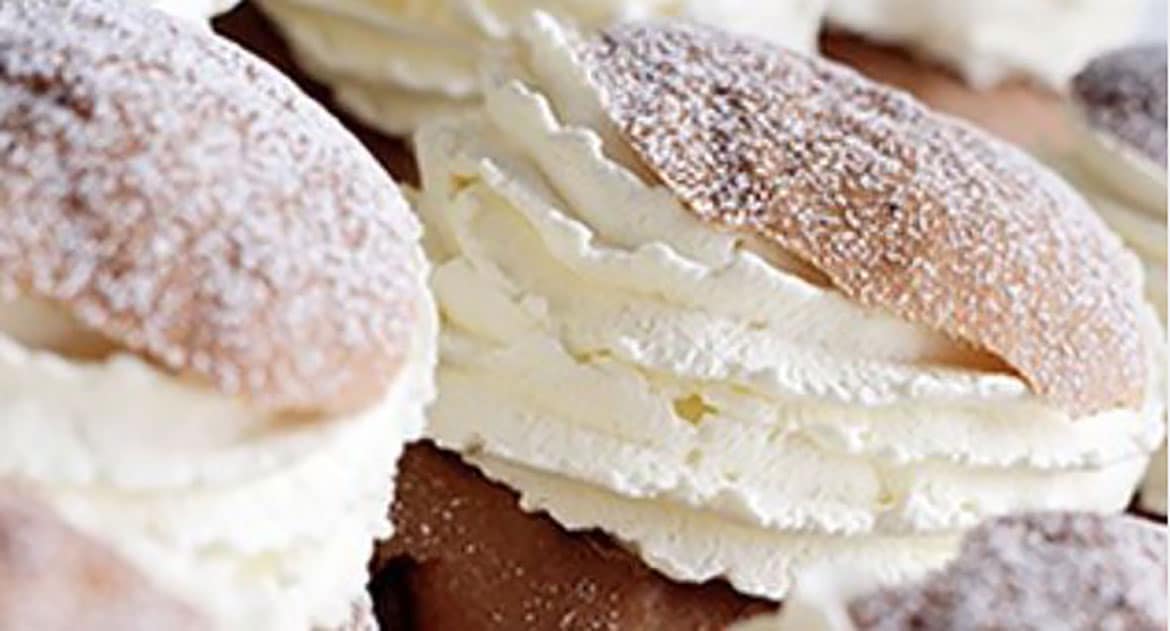The Swedish Semla
The Swedish semla, or Shrovetide bun, is a custom that dates back to the middle ages. Sweden was a catholic country before the reformation, and ahead of Lent people ate and drank heartily. It was important to build up stocks of energy before fasting.
The custom of the Shrovetide bun came from Germany and spread to Sweden during the 17th century, but in the beginning only the richest people could afford such a bun made from white flour and sugar.
Our modern version, filled with cream and almond paste, did not become commonplace until the period between the two world wars.
The semla is a bun made from wheat flour, milk, butter, sugar, yeast and cardamom. The bun is split into two halves. Marzipan is piped onto the bottom half of the bun and whipped cream goes around it. The lid or top part of the bun is placed on top of the cream with a sprinkling of icing sugar dusted on top.
The Swedish king, Adolf Fredrik, is said to have died from over consumption of these buns. Today the semla is not only eaten on Shrove Tuesday, it is sold from Christmas to Easter.
Swedish Semla is a must if visiting Sweden – you can enjoy the bun in several of our cafés





